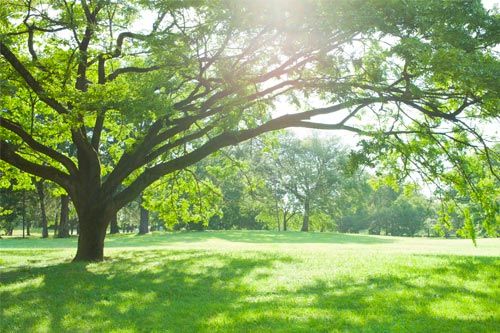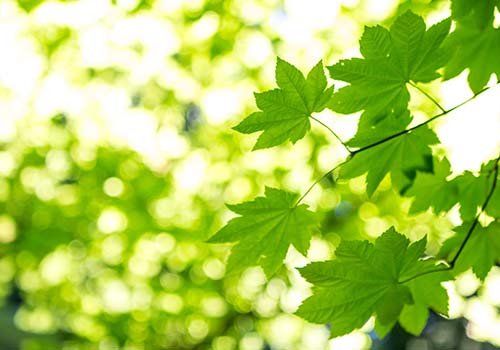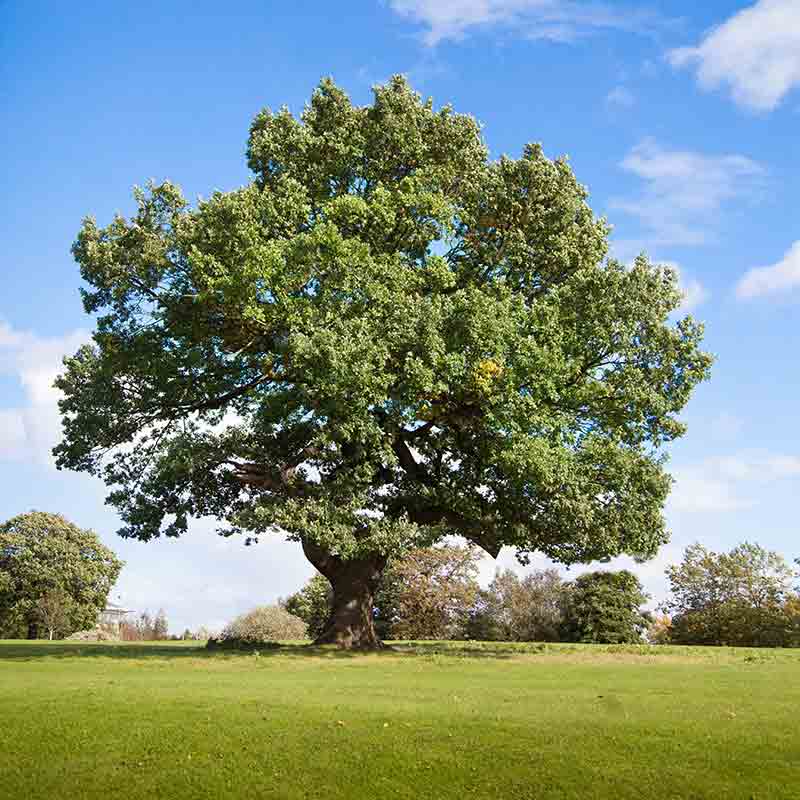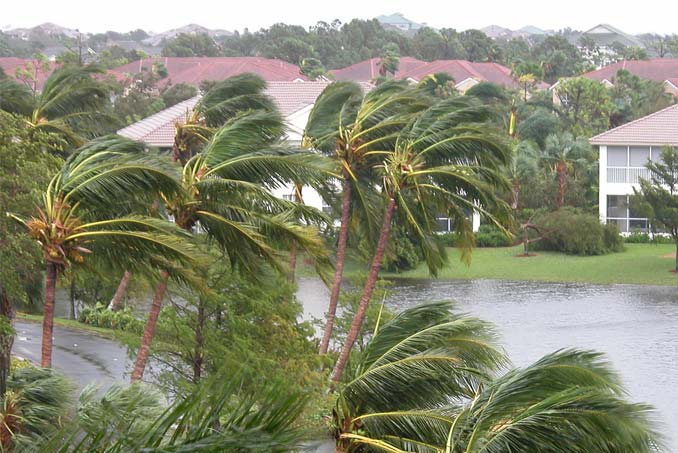5 Tips to Help Your Tree Survive a Dry Season
- By Admin
- •
- 28 Jan, 2019
- •
This is a subtitle for your new post

Trees are among the hardiest of all plants. They have deep root systems and numerous defenses against infection, harmful insects, and even short-term lack of rain. However, a persistently dry season can take a toll on your tree. By the time you notice the signs of declining healthy, the damage is harder to reverse.
The trick to helping your tree stay healthy during a dry season is to take action before you see your tree start to struggle. Here's how you can help reduce the effects of drought on your tree.
1. Provide Slow Water
When the ground is dry, pouring large amounts of water over the roots of your tree will provide some benefit, but it is not the most effective way to water to preserve root health. Trees do best in soil that is consistently moist. A large amount of water delivered in a short burst will evaporate or run off before it has a change to sink down deep to the roots of a tree.
To help conserve water and make sure the roots get ample opportunity to absorb moisture, circle a drip hose around the tree in a coiled fashion, extending outwards several feet from the trunk. The water will come out in steady drips, keeping the soil consistently moist.
If water conservation is an issue, you can turn off the drip hose for a few days and then run it for several hours. The tree will adapt to reduced water by slowing its growth. You can provide just enough water to keep the roots from dying.
2. Add Mulch
Mulch helps to keep the ground from losing moisture during dry, hot days. You can spread mulch a few inches thick over the ground. Mulch also discourages weed growth. Since weeds take moisture and resources from the soil, anything that discourages them from growing near your tree is helpful.
3. Prioritize Tree Care Over Care for Smaller Plants
Sometimes, it's hard to know what to prioritize during a drought. Trees show delayed injury from dry weather, so your grass will brown and your flowers will die long before the leaves of your beautiful trees begin to curl and brown.
As a result, people will often begin trying to save their grass or their shrubs while leaving trees to their own devices. However, grass can recover from drought more easily, and shrubs are not very costly or challenging to remove and replace.
Trees, on the other hand, can suffer from drought damage for years. They lose precious root growth, and foliage production suffers. Drought-damaged trees are more likely to suffer infections or become infested with insects. And if your tree dies, you'll have to spend a lot to remove and replace it, especially if the tree is larger.
If you have dry weather and limited time and water resources, water your trees first.
4. Avoid Trimming
Trees usually can benefit from proper pruning. However, even if your tree does need to be trimmed, hold off if possible. Trimming your tree causes stress. Your tree must work harder after pruning to seal off the wounded areas. During normal circumstances, a healthy tree can easily recover from careful pruning.
During drought, your tree needs to conserve all of its resources. Requiring your tree to recover from trimming can make the rest of the tree suffer for precious water and nutrients.
5. Don't Fertilize
Finally, don't fertilize your trees during drought. Fertilization can normally help boost a tree's growth, but during a dry season, you don't want boosted growth. You instead want your tree to hunker down and wait until resources are abundant again.
When you force a tree to grow more with fertilizer, you place a greater demand for water, and the water might not be there. Your tree can end up dying as a result of the imbalance.
For more information, contact us at Holcomb Tree Service.


Healthy, appealing trees offer enormous benefits some of which may surprise you. Not only will trees in your landscape design improve curb appeal and increase your home's property value, but they can also aid in energy efficiency. While surprising to learn, trees that shade your home, windows and outdoor AC units can reduce cooling costs in the summer by 35%.
Planting young trees around your home will add curb appeal, but the lack of height and foliage will not help your heating and cooling costs. Therefore, you should plant attractive trees that will grow quickly, producing shade for energy conservation within a few years. This guide, and your contractor's help to maintain will help you know which attractive, fast-growing and shade-producing trees you should consider for your yard.
Crabapple Tree
One tree that adds color, texture and a great deal of shade, while also being easy to grow and maintain, is the Crabapple tree. The tree produces blooms of lush pink flowers in the spring and thick green foliage through the summer and fall. This foliage shades your home with ease.
Since the tree's branches grow up, instead of out, this tree is the perfect option for your home's exterior and outdoor AC units. Be sure to prune away dead flowers and limbs in the early part of winter to ensure new growth in the spring and summer.
River Birch Tree
The river birch is another fast-growing, shade-producing tree that will make a big impact on your landscape design and heating and cooling costs. This tree is also easy to grow, and survives in most soil conditions and requires very little water once established.
Also, the River Birch thrives in areas of your yard that receives full sun. Planting this tree close to a sunny outdoor living area will keep you and your guests under comfortable shade. In addition, planting these trees next to your home's exterior windows will help reduce cooling costs.
It is important to note that the River Birch is a massive tree. On average, it can grow up to 50 or 90 feet tall. Because of its height, avoid planting the tree near power lines.
To ensure the tree remains attractive and healthy, trim off dead foliage and fertilize in the fall.
Crepe Myrtle Tree
A Crepe Myrtle is definitely one of the easiest trees to grow since it does not require any special soil conditions and is heat and drought-tolerant. Its unique shape has been compared to a mushroom cloud. This tree has either a single trunk or a multitude of trunks that intertwine together.
You will love the floral blooms that occur at the end of spring and early summer. In most climates, the blooms will continue through the early part of fall as well. Available in a large variety of colors including white, pink, red and purple, the Crepe Myrtle tree adds appeal, shade and value to your home.
While easy to grow, the Crepe Myrtle does require a decent amount of maintenance to keep it healthy and attractive. To protect its shape, pruning off dying foliage and branches at the end of winter is important.
Flowering Dogwood
No matter which species you choose, a Flowering Dogwood is a great option for areas of your yard that receive full sun or partial shade.
In the fall season, trim away dead overgrowth and dying blooms before fertilizing. This will help the tree survive the harsh winter temperatures.
To learn more about planting and maintaining your fast-growing, shade-producing trees, contact the professionals at Holcomb Tree Service today.

But, not all trees are equally valuable. By selecting species that will thrive and contribute to a home's environment, you may make your property much more appealing to buyers. These five steps will help you decide which new trees to plant near your home in Dallas, TX, and the surrounding areas.

Planting young trees around your home will add curb appeal, but the lack of height and foliage will not help your heating and cooling costs. Therefore, you should plant attractive trees that will grow quickly, producing shade for energy conservation within a few years. This guide, and your contractor's help to maintain, will help you know which attractive, fast-growing and shade-producing trees you should consider for your yard.



From energy efficiency and added curb appeal to an increase in your home's overall value, it is easy to see the benefits of healthy trees in your landscape design. Unfortunately, many homeowners do not fully understand how to care for their trees. While watering and even fertilizing may be priorities, protecting your trees from different diseases and pests is also important.
Development of Oak Wilt Disease
Once the fungus spreads to the tree's roots, oak wilt disease can be transmitted to other trees near or connected to the same root system.











